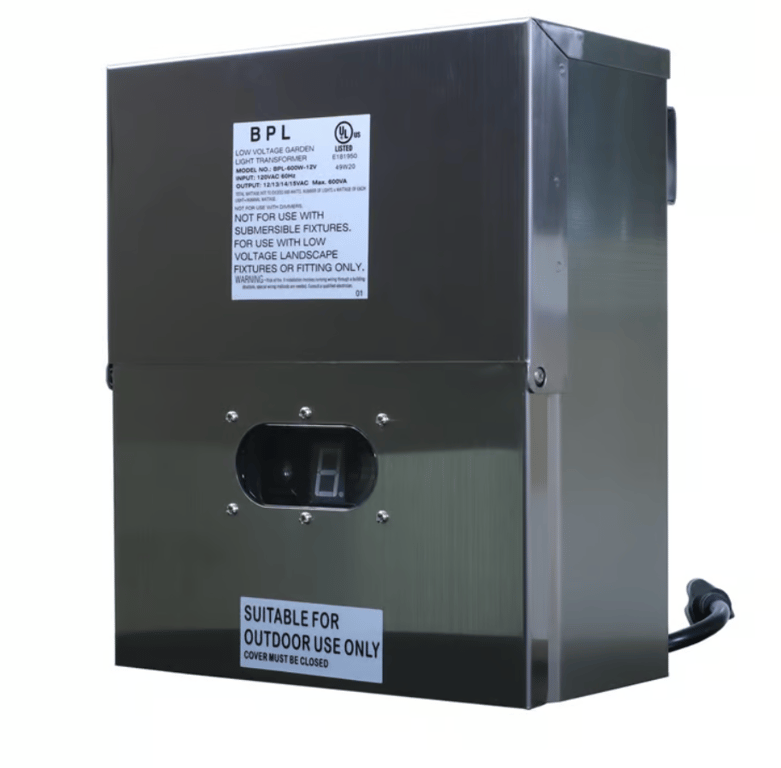




The transformer needs to be mounted next to a properly grounded indoor or outdoor outlet. It must be mounted at least 18″ above the ground if you are placing it outside. You can mount it on a wall, fence, post, or another suitable surface.
With low voltage lighting, it is much easier to hide the cable. If you are close to the shrubs or bushes, you can simply push it underneath to get it out of sight. You can also lay it along a nearby fence or foundation. The simplest way however is to cover it with mulch, soil, or some other landscape dressing.
You will want to natch the surface and slide the wire in or a few inches under. You need to pull up the sod and bury the cable at least a few inches deep to prevent problems if you aerate the lawn later. Then simply replace the sod firmly and you are ready to go.
Here are some helpful tips for fixtures that require a bit more attention:
These are used to provide an unobstructed view of the landscape at night. Most of the time they should be used as an uplighting placed in the ground. They are useful for lighting Fences, Palms, Flagpoles, or even mature trees. This will give us a designer’s point of view to see the effect of the light and not the source of the light.
Underwater fixtures enhance the beauty of your fishpond, fountain, or reflecting pool. Never use brass for these fixtures, as it will cause harm to aquatic plant and animal life. Choose instead non-oxidizing materials when selecting a fixture for this application like Our BPL500-FG.
These fixtures can be used to light trees either from the ground up or within the tree itself. Because trees come in all shapes and sizes, they are lit in different ways to enhance their beauty. Here are a few ideas:
Using Your Low-voltage Fixtures for Moonlighting
Moonlighting is a beautiful landscaping technique that simulates the light of the full moon and filters it down through the branches of the tree. This requires you to place the fixtures in the actual tree. Here are some things to remember:
Here's an infographic step-by-step process to install your Low Voltage Light